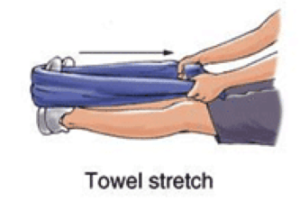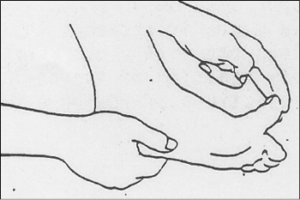By: Mary Boedeker, DPT and Clinic Manager at ApexNetwork Physical Therapy in Belleville, IL
Many people have pain throughout the day or after exercises. Some individuals experience a sharp pain in the bottom of their foot with the first few steps they take. After the individual gets moving in the morning they find that their pain can dissipate for a while, but can return after prolonged activity.
What is the plantar fascia?
Plantar fascia is a strong band of tissue that crossed the plantar surface (bottom) of the foot from the heel to the bones in the middle of the foot. This taught band of tissue helps form and support the arch of the foot allowing for increased shock-absorption during weight bearing activities.


Who gets plantar fasciitis?
Risk factors for getting plantar fasciitis include being between the ages of 40-60 years old, female gender, abnormal gait or posture, obesity, exercise resulting in repetitive or increased stress placed through the heel, and occupations that requires prolonged weight bearing.
What causes plantar fasciitis?
The plantar fascia can become inflamed and irritated by repetitive smaller trauma to the fascia or heel through changes in exercise, prolonged standing or walking, foot wear with poor arch support, increased weight, or tight calf musculature. Studies have revealed that changes in an individual’s cadence and posture have been associated with the development of plantar foot pain.
How do they diagnose it?
Diagnosis is primarily achieved through physical examination and analysis of the patient’s medical history. There are some physiological changes that can be identified through imaging or ultrasound, including thickening of the plantar fascia, nodular thickenings, or fat pad abnormalities. However, imaging is primary used to rule out another underlying cause of the pain such as a stress fracture.
How do I treat it?
Often associated with plantar fasciitis is decreased flexibility, abnormal gait, impaired posture, and muscle weakness. These impairments should be addressed in order to regain balance and decrease stress placed through the heel and plantar fascia. Participation in a physical therapy program is beneficial to identify what factors have led to the development of this condition. After one has identified these causes the therapist can issue home exercises, perform manual therapy treatment, and use modalities for pain management.
What can I do at home to help?
Often plantar fascia and calf stretches help reduce pressure throughout the foot leading to decreased pain. Also helpful is rolling the involved foot over a frozen water bottle to massage the plantar fascia and decrease pain. It may be beneficial to look into orthotics to support the foot while weight bearing, either off the shelf or from a certified orthotics provider.
If you have any questions regarding this condition or would like to have an evaluation for foot pain please contact your nearest Apex Physical Therapy clinic for a thorough exam.



Resources:
- Gait deviations associated with plantar heel pain: A systematic review. Adam Phillips (MPH) & Shane McClinton (DPT, OCS, FAAOMPT) https://www.ncbi.nlm.nih.gov/pubmed/28095359
- Imaging of Plantar Fascia Disorders: Findings on Plain Radiography, Ultrasound, & Magnetic Resonance Imaging. Draghi F, Gitto S, Bortolotto C, Draghi AG, Ori Belometti G. https://www.ncbi.nlm.nih.gov/pubmed/27957702
- Novel and Conservative Approaches Towards Effective Management of Plantar Fasciitis. Assad S, Ahmad A, Kiani I, Ghani U, Wadhera V, Tom TN. https://www.ncbi.nlm.nih.gov/pmc/articles/PMC5215813/
